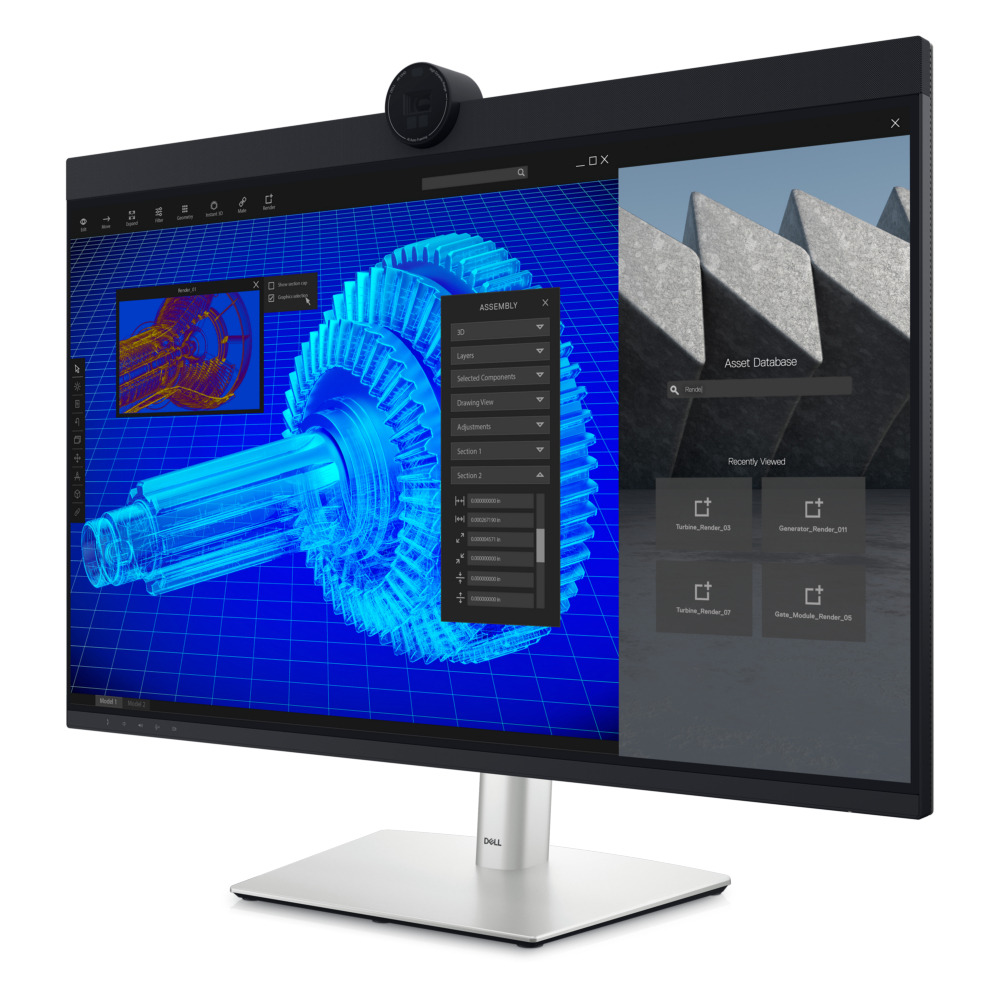First, a Little History
A long time ago, I used two screens on my computer. Back then, screens were a lot smaller and having a second 15-inch monitor could make a real difference. However, with the arrival of massive-sized iMac screens, I switched to a one-screen setup, and I was mostly happy with that.
The iMac’s 27-inch screen has a lot of pixels and can hold a lot of applications and their related data. Moreover, macOS’s Mission Control feature is pretty great. With a single four-finger swipe on my trackpad, I can easily navigate between desktops full of additional apps. Though I have been tempted to add a second screen, the combination of a 27-inch screen plus multiple desktops has always kept me from pulling the trigger on an additional monitor.
A Little Experiment
I have been working on setting up a new home office, and it got me thinking a lot about having a reference screen. We have talked to guests on Mac Power Users who have done this with a wall-mounted television where they send data via their Mac using an HDMI cable. I started thinking about mounting a television behind my Mac. The television would hold things such as my calendar and OmniFocus lists for the day, things I think of as reference data. Part of my inspiration was Panic’s now abandoned Status Board app. I wanted to have a status board in my office.
There were problems with the wall-mounted television, however. My office is just a ten-by-ten-foot room, and there isn’t much wall space. Putting it behind and above my iMac would not work because my desk converts to a standing desk, and I switch the desk between standing and sitting several times a day. To put it on the wall behind my Mac, it would nearly need to be at the ceiling.
The more I thought about it, the more buying a second monitor to place on my desk as a reference monitor made sense. So after much gnashing of teeth, I bought a Dell 24-inch 4K Monitor. I chose this monitor for three reasons: 1. generally positive reviews; 2. pixel density; and 3. ability of the monitor to work vertically.
I was never under any illusion that a monitor I would buy from Amazon would match the color, pixel density, and overall quality of the iMac screen. I did, however, want something nice that had as high of a pixel density as I could afford.
I knew this monster would be right next to the iMac, and I wanted it to look presentable. I ordered the AmazonBasics monitor arm, and when the monitor arrived, I installed it vertically to the right of my iMac. With the monitor arm, I was able to get the monitor right next to the iMac.
Vertical? Really!?!
There was never any question in my mind that I would install the monitor vertically. The intention was to make this a reference monitor off to the side. Setting it up horizontally would require a lot of head twisting and take up way too much room on my desk. One of the reasons I chose this particular monitor was that it was billed as “widescreen” which, when turned on its side, made it an even more narrow screen. It does look a little funny on its side next to the iMac, but it’s very functional.
I still keep my chair centered on the iMac screen. The whole idea is that this extra monitor is a reference screen and not a working screen. I do all of my writing, screencasting, video editing, lawyering, and MacSparky-ing on the iMac. After all, the iMac is, by far, the better screen in every way measurable.
So what goes on that extra screen? The top half is nearly always open to Calendar in Week view. I use my calendar throughout the day. Moreover, I make my own appointments, so I like having the calendar always in view. (Related, I keep Fantastical open on the iMac in full-screen view, set to display as a 14-day week in full-screen mode on the iMac as the second desktop screen open right next to my working space. That is my only use of Spaces now that I have a second monitor.)
The bottom half of the reference monitor usually displays my working OmniFocus list, but it can also hold other reference data such as a web page, Messages, or Slack.
When I podcast, the reference screen holds all of the recording software and dials so I can check on the recording status without having to hide the show outline and notes.
Generally, most everything else stays on the iMac screen. I find myself occasionally putting a Safari tab or a PDF file on the reference screen (full page PDFs look pretty good in that vertical orientation), but if I am working in an app, such as editing a PDF file, it is always on the iMac screen, right in front of my face.
Recycling the Box
When I first ordered the second monitor, I wasn’t entirely sold. I very carefully kept and preserved the packaging and materials and half-expected to send it all back. I wasn’t excited about my computer taking on a monster-size status on my desk, nor was I convinced that a second monitor would be any better than my swipe-between-screens workflow.
Now, I’m sold. The practice of having a reference screen lives up to the idea. It is a bit ugly having a Dell monitor hanging off the side of my iMac, but the ability to have reference information available at a glance is golden. I have since recycled the boxes, and once again, after a long hiatus, I am a two-screen guy.

